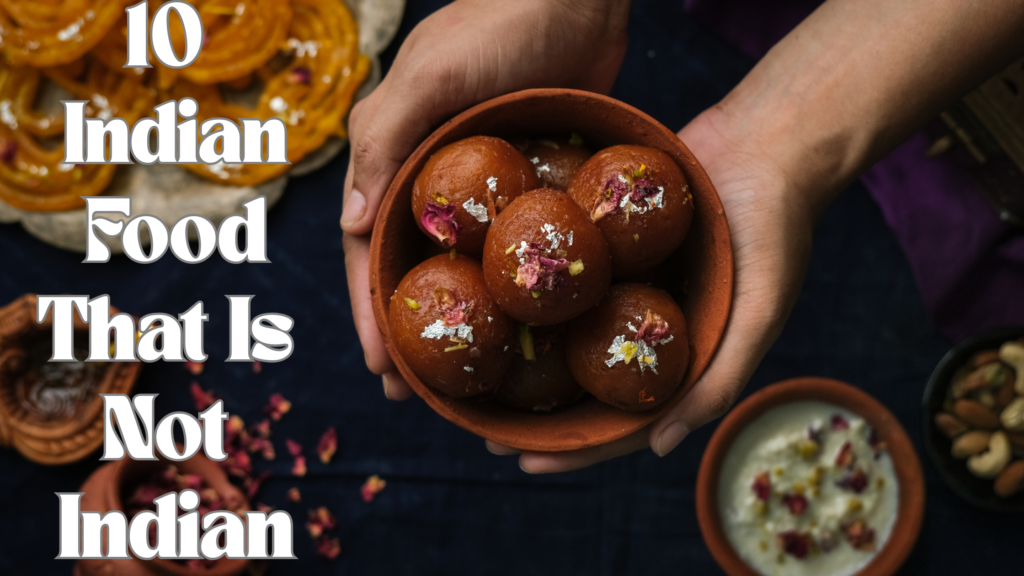India is a land of incredible culinary diversity, known for its spicy curries, sweet delights, and flavorful street foods. However, not all the foods we associate with Indian cuisine are truly Indian in origin. Over centuries, India has absorbed a multitude of foreign culinary influences, from the Persians and Portuguese to the British and Chinese. These foreign dishes were welcomed with open arms, and over time, Indian chefs added local ingredients and spices, creating a beautiful fusion that feels wholly Indian. In this blog post, we’ll explore 10 beloved dishes that are integral to Indian cuisine today but have foreign origins.

10 Iconic Indian Dishes That Are Not Indian Dishes Are:
- Samosa
Origin: Middle East (Persia)
Samosa is one of India’s most popular snacks, especially enjoyed with a cup of chai in the evenings. It is a crispy, triangular pastry stuffed with spicy mashed potatoes, peas, and sometimes lentils or meat. But did you know that samosas are not originally Indian? The concept of the samosa comes from the Middle Eastern dish called “Sambosa,” which was introduced to India by Persian traders during the Delhi Sultanate in the 13th century. Originally filled with minced meat and nuts, Indians gave it a vegetarian twist using local ingredients like potatoes and peas, and it quickly became a favorite street snack across northern India.
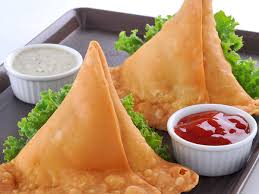
- Chai (Tea)
Origin: China
India’s obsession with tea is unmatched. Masala chai, a blend of black tea, milk, sugar, and a variety of spices like ginger and cardamom, is a staple beverage in nearly every Indian household. However, tea originally comes from China. It was popularized in India by the British in the 19th century when they started cultivating tea in Assam and Darjeeling to break the Chinese monopoly. Indians later turned it into their own version, adding bold spices and creating what we now know and love as masala chai.
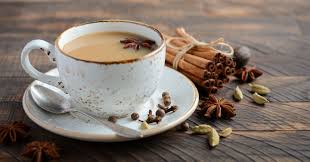
- Gulab Jamun
Origin: Persia
Gulab jamun, those soft, spongy, syrup-soaked balls of happiness, are a staple at Indian weddings and festivals. This dessert is actually derived from a Persian sweet called “Luqmat al-Qadi.” The Mughals brought it to India, where it evolved using khoya (reduced milk solids) instead of flour and yeast. The name “Gulab” refers to the rose-flavored syrup, while “Jamun” is a native fruit that resembles the dessert in size and color.
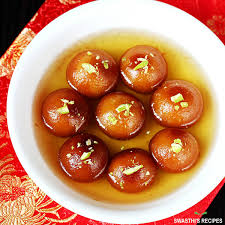
- Vindaloo
Origin: Portugal
Vindaloo is a fiery pork curry known for its bold flavors and tangy notes. It has its roots in a Portuguese dish called “Carne de vinha d’alhos” (meat marinated in wine and garlic). The Portuguese colonizers brought this recipe to Goa in the 15th century. Goans adapted it using local ingredients like palm vinegar and spicy red chilies, transforming it into the famous vindaloo curry we know today. While originally a pork dish, chicken and lamb versions are also popular now.

- Biryani
Origin: Persia
Famous In: Hyderabad, Lucknow, Kolkata, Kerala
Biryani is a rice dish that needs no introduction. A fragrant blend of basmati rice, spices, and meat or vegetables, it is often seen as the king of Indian meals. Biryani has Persian roots and came to India via Central Asian traders and Mughal rulers. It was originally a simple meat and rice dish. In India, it evolved into numerous regional variations: Hyderabadi, Awadhi, Kolkata, Malabar, and more. Each version has a unique preparation style, flavor profile, and even ingredients—like boiled eggs or potatoes.
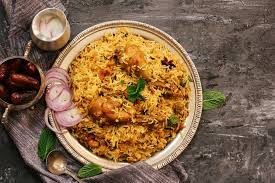
- Jalebi
Origin: Iran/Iraq
This sugary, spiral-shaped dessert is a breakfast item in parts of northern India. Jalebi traces its roots to a Middle Eastern sweet called “Zalabiya” or “Zlebia.” It made its way to India during the medieval period through trade routes. The Indian version involves deep-frying maida batter into coils and soaking them in saffron-flavored sugar syrup. Crispy on the outside and juicy inside, jalebi is often paired with rabri or served hot in the morning with fafda in Gujarat.
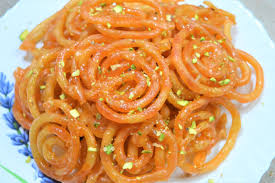
- Naan
Origin: Persia
Naan is a soft, leavened flatbread usually baked in a tandoor. Though widely associated with North Indian cuisine today, naan is Persian in origin. It was introduced in India by the Mughals and was initially reserved for royalty. Over time, naan became more common and underwent several Indian adaptations—such as butter naan, garlic naan, and even stuffed naan with cheese or keema. It pairs beautifully with rich curries like butter chicken or paneer makhani.
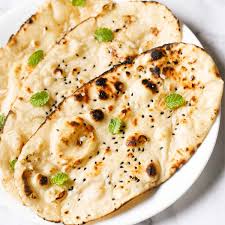
- Mulligatawny Soup
Origin: British colonial adaptation of South Indian rasam
Mulligatawny soup is a thick and hearty dish often made with lentils, vegetables, chicken, and spices. The name is derived from the Tamil words “milagu” (pepper) and “tanni” (water), indicating its roots in spicy rasam. British colonists found rasam too watery and spicy, so they modified it into a more substantial soup to suit their palates. Although it’s not commonly found in Indian homes today, it remains a staple in Anglo-Indian and colonial-style restaurants.
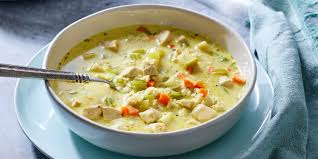
- Chicken Tikka Masala
Origin: United Kingdom
While Chicken Tikka—a dish of marinated, grilled chicken—is Indian, the creamy tomato-based gravy known as Chicken Tikka Masala was invented in the UK. Legend says a customer in Glasgow asked for sauce with his dry tikka, leading the chef to whip up a tomato-cream curry using Indian spices. The dish gained massive popularity in Britain and found its way back to Indian restaurants, particularly those catering to tourists.
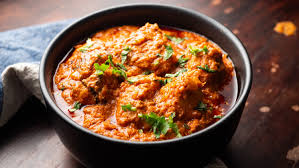
- Falooda
Origin: Iran
Falooda is a rich, cold dessert-drink made with rose syrup, vermicelli, sweet basil seeds, milk, and ice cream. It was adapted from the Persian dessert “Faloodeh,” which was a semi-frozen vermicelli and rose water treat. Mughals brought it to India, and Indians enriched it with milk, kulfi, dry fruits, and more. Today, falooda is a summer favorite and a popular Ramadan special.
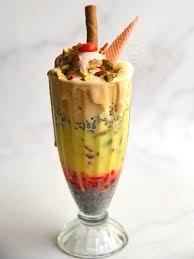
10 Iconic Indian Dishes FAQs :
Q1: Are these dishes no longer considered Indian?
Not at all. Though their origins lie outside India, they have become integral to Indian cuisine through centuries of adaptation.
Q2: Why are so many Indian dishes of foreign origin?
India has a long history of trade, colonization, and cultural exchange, which has introduced various foreign cuisines to the subcontinent.
Q3: Which is the oldest foreign-origin dish adopted in India?
Samosa and Naan are among the earliest, introduced during the medieval Persian invasions and Mughal rule.
Q4: Are these 10 Iconic Indian Dishes still eaten in their countries of origin?
Yes, but they are often quite different in taste and preparation compared to their Indian counterparts.
10 Iconic Indian Dishes Conclusion :
India’s culinary heritage is a melting pot of global influences, woven together over centuries of trade, conquest, and cultural exchange. While these 10 iconic dishes—like samosa, biryani, chai, and gulab jamun—may have originated in Persia, Portugal, China, or the UK, they’ve been reimagined with Indian spices, ingredients, and soul. Today, they are not just dishes; they’re emotions, rituals, and a cherished part of everyday life in India.
These globally inspired foods have been embraced so deeply that they feel unmistakably Indian. The fusion of flavors tells the story of India’s openness, adaptability, and love for great food. So next time you enjoy one of these delicacies, remember—you’re tasting a bit of history and the essence of India’s diverse culinary evolution.
Which of these dishes did you find most surprising? Let us know in the comments or share it with your foodie friends!
For more such information on Indian Cuisine and Food follow Popnewsblend.

Hi, I’m Prashant Jain — a curious soul, storyteller, and content creator at heart.I’ve always been drawn to the world of entertainment, travel, sports, health & lifestyle — not just as a writer, but as someone who genuinely lives these experiences. Whether I’m binge-watching the latest OTT series, exploring offbeat spiritual destinations in India, or diving deep into wellness routines and cricket match insights, I love sharing what I discover with like-minded readers.
PopNewsBlend is my way of blending personal journeys with meaningful stories — ones that inform, inspire, and keep you ahead of the curve. Everything I write comes from real observations, hands-on experiences, and a deep passion for understanding the world around us.
Discover more from Popnewsblend
Subscribe to get the latest posts sent to your email.

